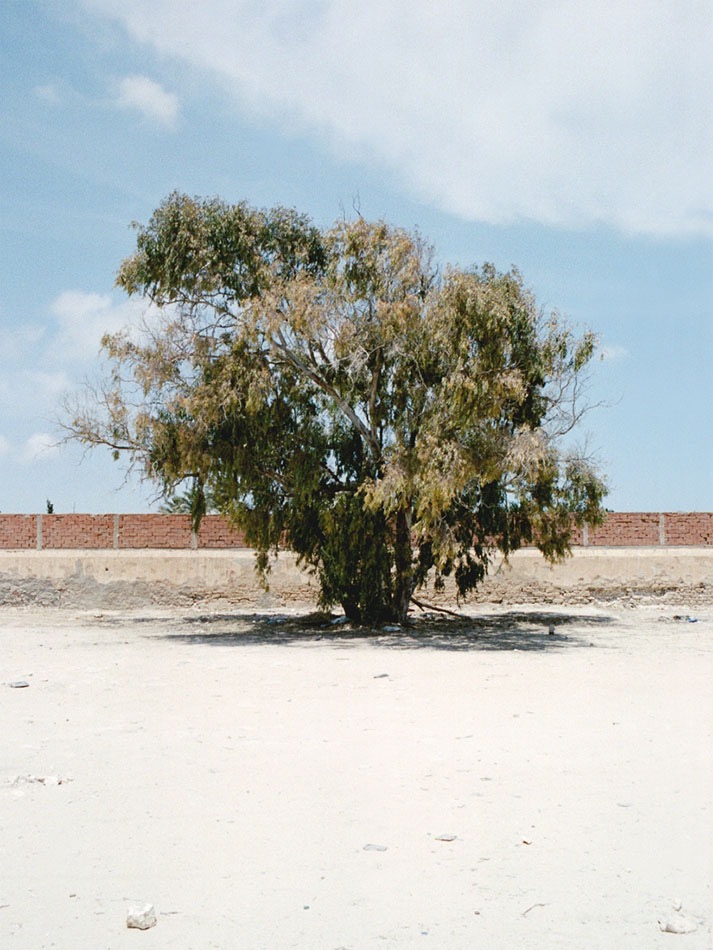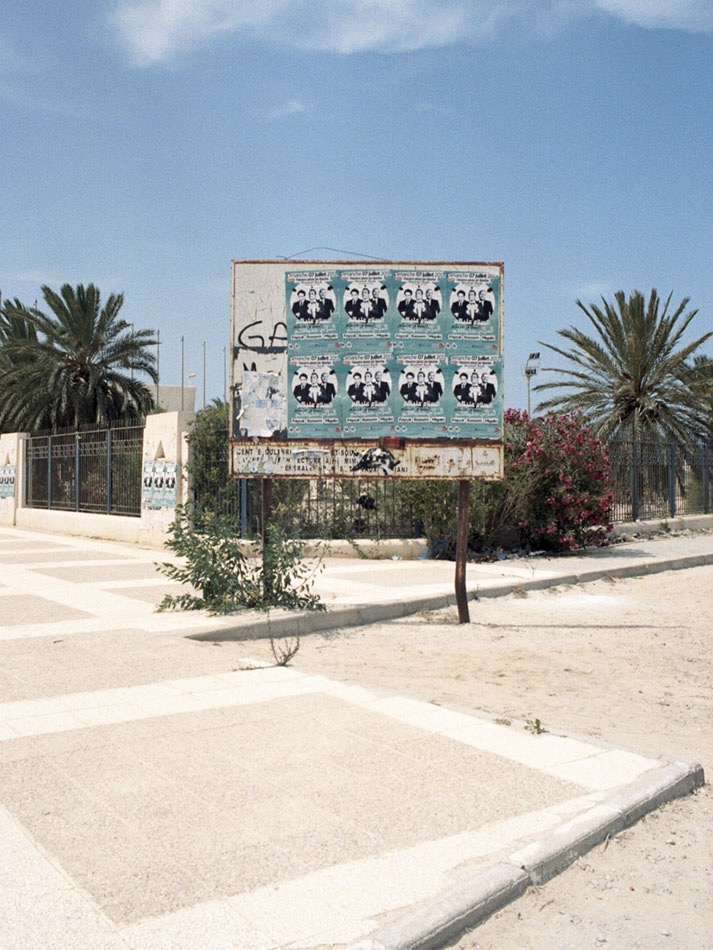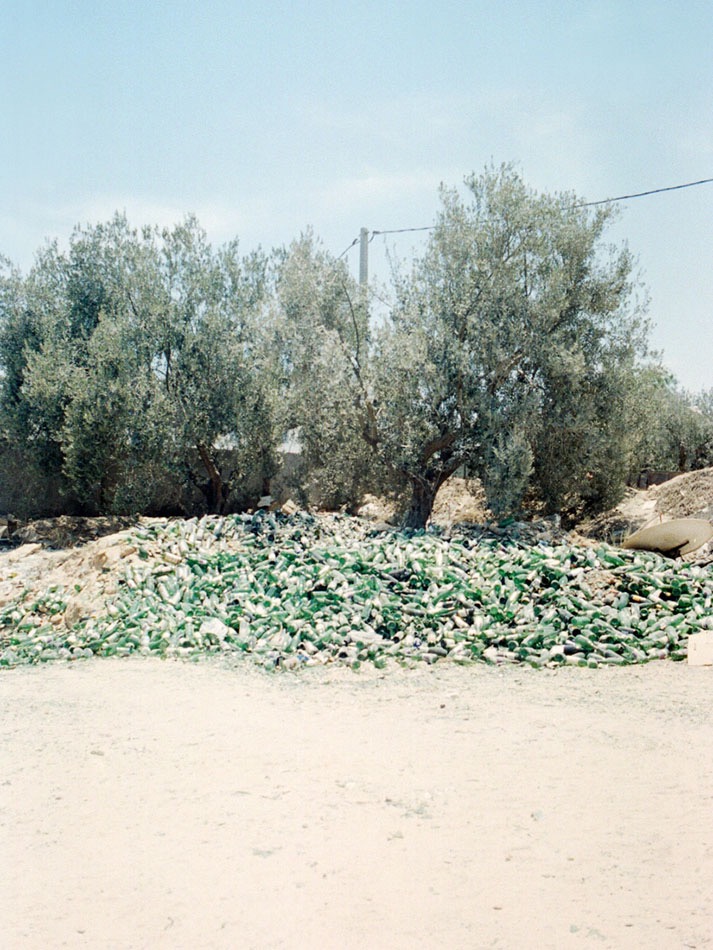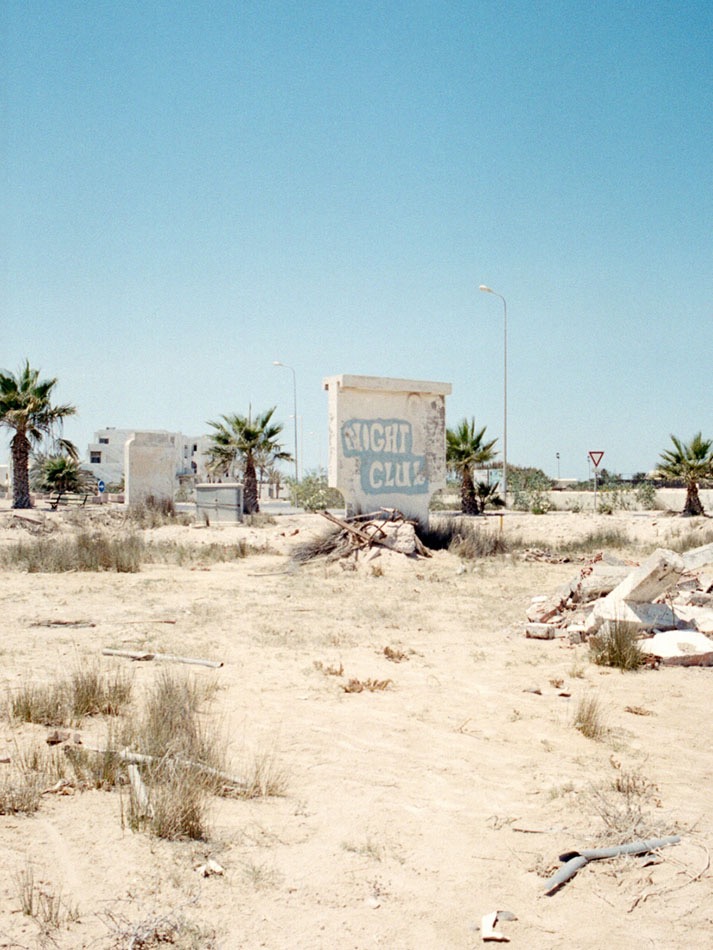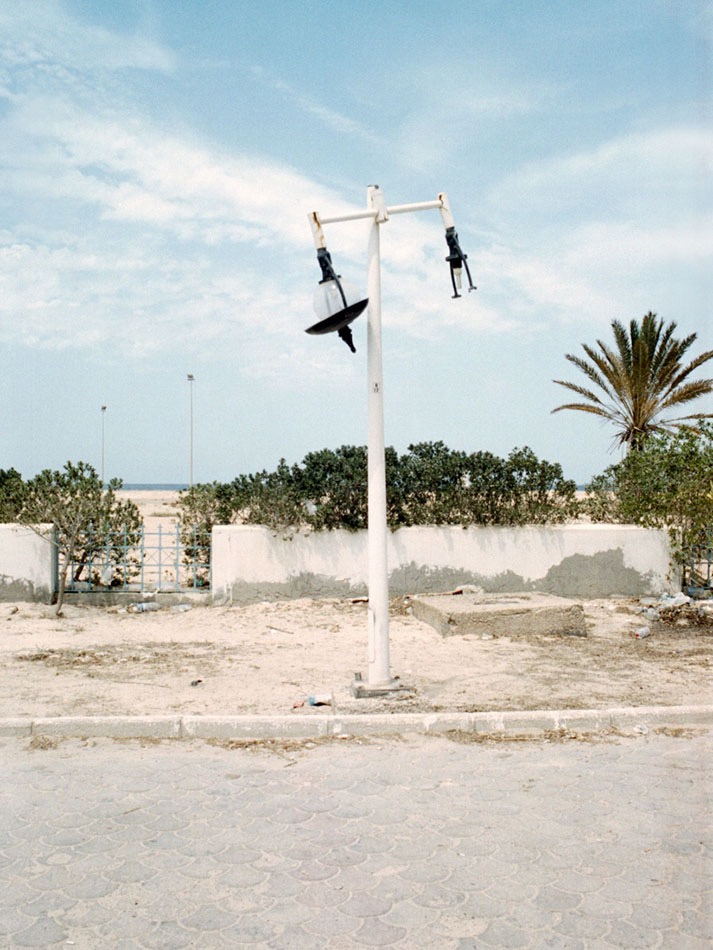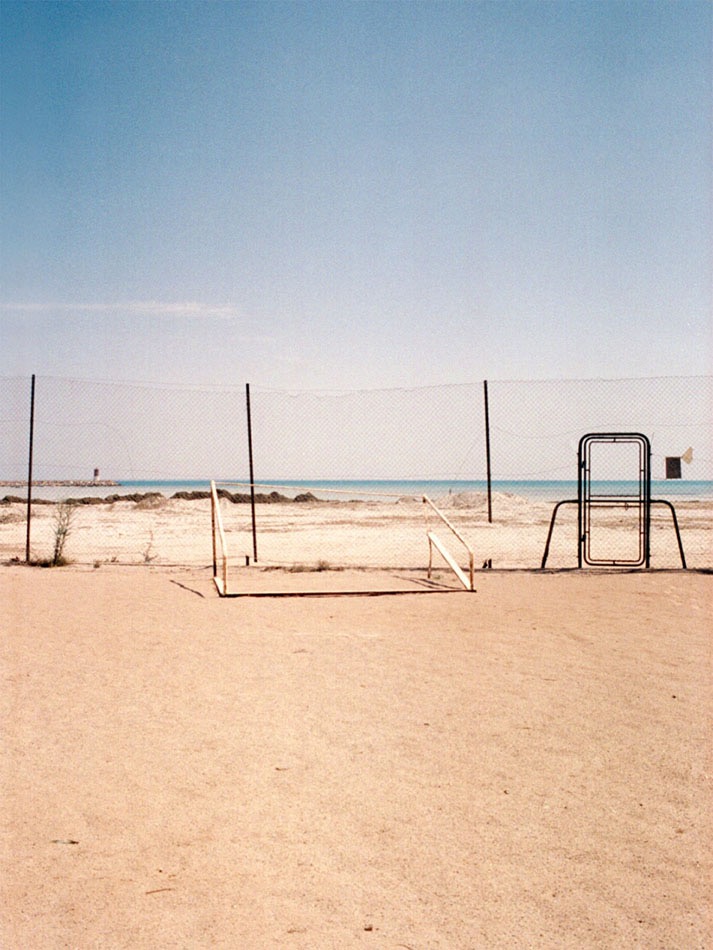Sand. Overwhelming light of a warm summer afternoon. Reverbering boom. Rickety fences. Remains of any concrete installation. And everywhere the void. And everywhere absence. Absence, absence of man in a space that he built and then deserted. It is the diffuse feeling that emerges from the images of Julien Malabry. No one passes through his photographs. At first sight, one believes in an exploration of the neglected spaces on the outskirts of any western city. And yet it is the island of Djerba, in the south of Tunisia.
A thousand places of the pictures of postcards that this name evokes, seaside resorts, palm trees and other beaches of hot sand, Malabry scratches the peeling of the landscapes of postcards sold by the travel agencies, to discover nearby complexes Hoteliers abandoned when hardly finished, spaces abandoned, dead places. The photographer lucidly notices the flickering of urbanism to the west, even in the places of the stereotyped and self-centered tourism that he built himself.
But beyond the will to mount this “back of the decor” of the seaside island, Malabry lets grasp by a fascination for the forms, pieces of architectures and residual spaces that it photographs in centered, frontal frame , As many sculptures found. In Greek mythology, the island of Djerba is known to inhabit the Lotophagous people who, as their name indicates, are eaters of “lotos”, a plant whose consumption on the property plunges all those who enjoy it. A blessed oblivion, making them forget who they are and where they come from and deprive them of any desire to leave the island. In his will to go see behind the “scene” tourist Djerba, behind the artificial pools and hotels in fake, Malbary refuses to somehow taste the lotus, to confront the solar harshness of the island and Its peripheries in dwelling.
Website: cargocollective.com/julienmalabry
